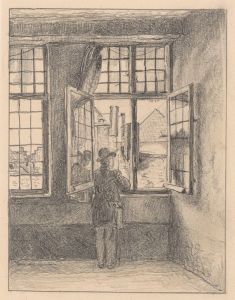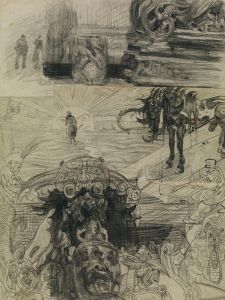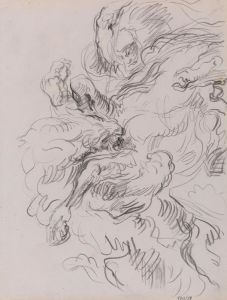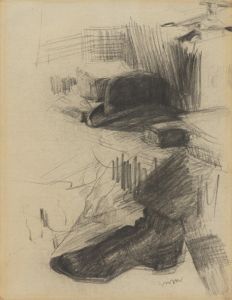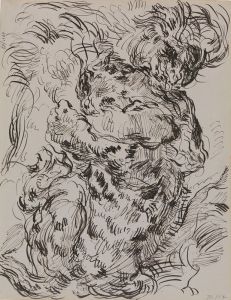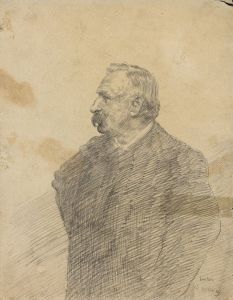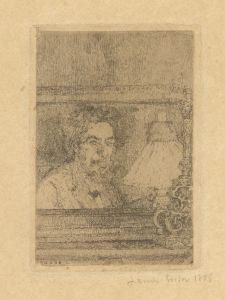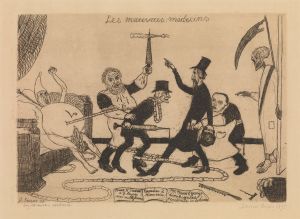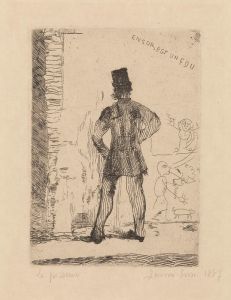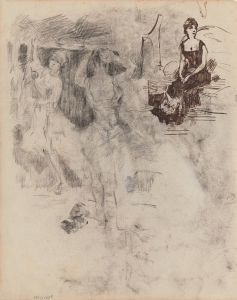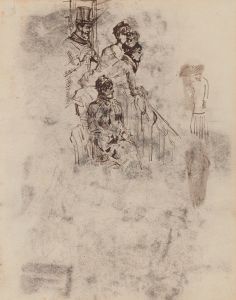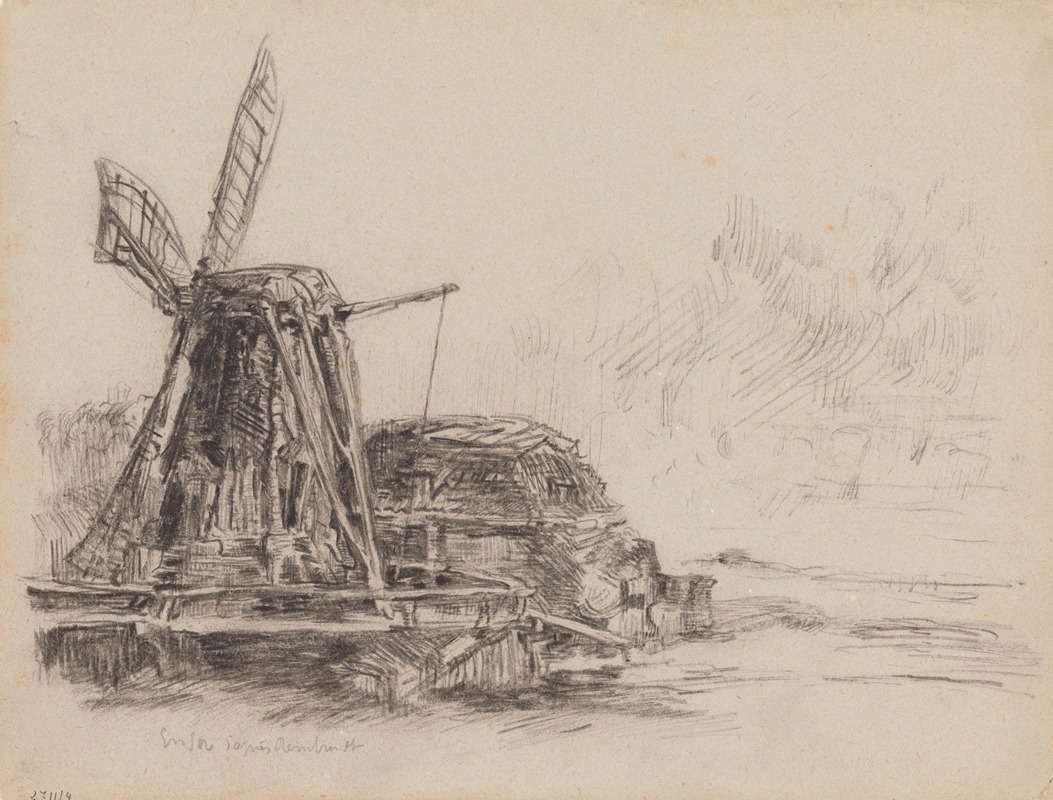
Windmill
A hand-painted replica of James Ensor’s masterpiece Windmill, meticulously crafted by professional artists to capture the true essence of the original. Each piece is created with museum-quality canvas and rare mineral pigments, carefully painted by experienced artists with delicate brushstrokes and rich, layered colors to perfectly recreate the texture of the original artwork. Unlike machine-printed reproductions, this hand-painted version brings the painting to life, infused with the artist’s emotions and skill in every stroke. Whether for personal collection or home decoration, it instantly elevates the artistic atmosphere of any space.
James Ensor, a prominent Belgian painter known for his unique and often avant-garde style, created "Windmill" in 1889. Ensor was a key figure in the Symbolist movement and is often associated with the later development of Expressionism. His works are characterized by their vivid use of color, intricate detail, and often fantastical or grotesque imagery.
"Windmill" is a lesser-known piece within Ensor's oeuvre, but it reflects his fascination with landscapes and his ability to infuse them with a sense of mystery and emotion. The painting depicts a windmill, a common sight in the Belgian countryside, rendered with Ensor's distinctive brushwork and color palette. The windmill stands prominently in the composition, surrounded by a landscape that suggests movement and energy, perhaps reflecting the dynamic nature of the wind itself.
Ensor's choice of subject matter in "Windmill" can be seen as part of his broader interest in capturing the essence of his native Belgium, often through scenes that combine the mundane with the extraordinary. While Ensor is more widely recognized for his satirical and often macabre depictions of society, "Windmill" offers a glimpse into his ability to convey the serene and the picturesque.
The painting is executed with a keen attention to detail, particularly in the textures of the windmill's sails and the surrounding landscape. Ensor's use of color in "Windmill" is noteworthy; he employs a range of earthy tones that evoke the natural environment, contrasted with the more vibrant hues that bring a sense of life and movement to the scene. This interplay of color and form is a hallmark of Ensor's style, demonstrating his skill in manipulating visual elements to evoke mood and atmosphere.
"Windmill" is not as widely exhibited or studied as some of Ensor's other works, such as "The Entry of Christ into Brussels in 1889" or "Skeletons Fighting Over a Hanged Man," which are celebrated for their complex social commentary and innovative use of imagery. However, "Windmill" remains an important piece for understanding the breadth of Ensor's artistic exploration and his ability to capture the essence of his surroundings with both sensitivity and imagination.
The painting is housed in a private collection, which limits its accessibility to the public and art scholars. As a result, "Windmill" has not been the subject of extensive academic analysis or exhibition. Nonetheless, it contributes to the rich tapestry of Ensor's work, offering insight into his versatility as an artist and his capacity to find beauty and intrigue in the everyday.
In summary, "Windmill" by James Ensor is a testament to the artist's skill in landscape painting and his ability to infuse ordinary scenes with a sense of wonder and vitality. While it may not be as celebrated as some of his more provocative works, it remains a valuable piece for those interested in the full scope of Ensor's artistic achievements.





